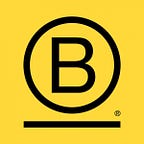The Plaque Problem: There’s a Difference Between a Business Statement of Purpose and Effective Leadership
Part 2 In a Series of Excerpts from Cheryl Bachelder’s book, Dare to Serve
When Cheryl Bachelder took over as CEO of Popeyes, she made the decision to lead in a new way. She prioritized teamwork, encouraged transparency and helped her employees find the meaning in their work. Her approach is called servant leadership, and the story of how that approach made a difference at Popeyes is revealed in Bachelder’s book, Dare to Serve (Berrett-Koehler, 2015). The following content about business statements of purpose was excerpted from the book’s third chapter.
This excerpt is only one in a series from Dare to Serve. Check out the full series list in How One CEO Used Servant Leadership to Transform Her Business.
The Work That We Do
As part of the turnaround of Popeyes, we decided that the organization should have clarity about the purpose of the work we do. Our leadership team came together, looked at our experiences in this industry, reviewed the values and beliefs we have about restaurant careers, and thought about the role we have in developing leaders.
The conversation started with these beliefs:
We are proud of the career paths our industry offers. Many of our franchise owners began as a fry cook or front counter person and are now successful entrepreneurs owning multiple restaurants. Many of our restaurant general managers started at the front counter and now run a restaurant business with sales of more than $1.2 million annually. We develop leaders in this business — and we celebrate that fact.
We are proud of the quality of food that our teams prepare each day for our guests. We are proud of the training that we offer to teach people good work habits, food sanitation skills, teamwork, and problem solving. We are proud that we earn our living serving other people — our owners, our team members, our guests. We are proud of the opportunities we bring to developing countries around the globe. We are in the service industry — and we celebrate that fact.
This discussion led us to declare the purpose of our work at Popeyes: Inspire servant leaders to achieve superior results.
We decided that servant leadership would be our philosophy. This makes sense. We are in the business of serving others a delicious meal. Why not lead from the same vantage point?
Servant leadership simply means service above self. We decided to serve others well.
Superior results are the measure of how well we serve. Serving and performing go hand in hand.
We created the Popeyes purpose in the fall of 2011, nearly three years after we had begun the turnaround of the company. Why did we choose that time?
The turnaround was well under way. We had begun to experience some success in the bold, ambitious goals we had set for the enterprise. We were serving our franchise owners well, but we were not sure that the success would continue. We worried that we would be just another “one-hit wonder” leadership team who came together for a few years and generated good results and then went our separate ways. What could we do to lead the organization to sustainable business success?
While we believed that the work we were doing was purposeful, we weren’t sure the rest of the organization shared our conviction. Maybe it was purposeful for us but “just a job” for them.
We analyzed what we had done well and what we needed to do next. We realized that we had not explained to our followers why the work we were doing was important — why we passionately believed in the future of Popeyes. The organization as a whole needed to share in that purpose. At the very next company meeting, we revealed our newly crafted Popeyes purpose to the team:
Popeyes Purpose: Inspire servant leaders to achieve superior results.
The Plaque Problem
The Popeyes purpose was well received by the people. We had to spend a fair amount of time explaining servant leadership — helping them understand that it simply meant service to others above self. Other than that, people seemed to understand the purpose. They thought it was laudable. I’m not sure what they said privately after the meeting. I suspect it was something like, “Let’s see if this purpose really changes the way we work at Popeyes.”
We ran into what every company runs into. Business statements of purpose are nice. A few people get excited about them and live them in their daily work. Most people leave them right where they saw them — on the plaque on the wall.
Plaques hang on walls. Plaques collect dust. Plaques don’t drive superior performance results.
Popeyes people weren’t against the purpose, they just had no personal connection to the statement.
I began to challenge the leaders of the company in one-on-one meetings and in large groups. I said, “That purpose statement is a plaque at Popeyes. It hangs on the wall. Alone, it has no meaning and no impact on our performance. The only Popeyes purpose anyone ever meets is your purpose.”
No one ever met a plaque. No one ever gave a plaque credit for inspiring them to serve, for helping them reach their potential, or for driving superior results. Plaques don’t do that. People do.
This excerpt was published with permission from Dare to Serve (Berrett-Koehler Publishers, 2015).
Read the next excerpt in this series: What’s Motivating Your Employees? Exercises for Helping Workers Find Purpose
Check out the full series from Dare to Serve: How One CEO Used Servant Leadership to Transform Her Business
